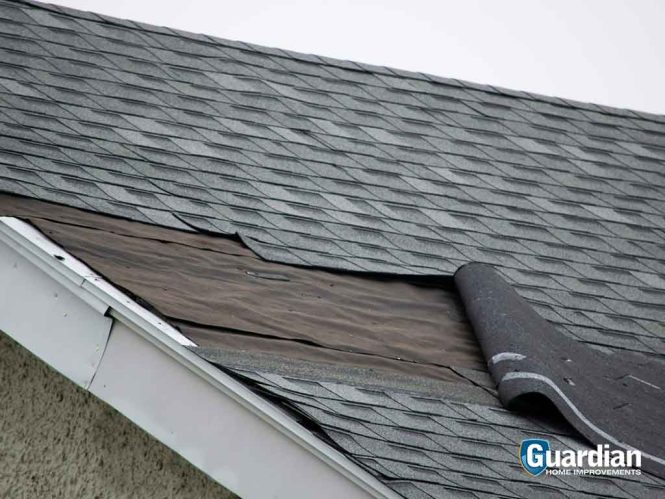

Handling roof storm damage is crucial for protecting your home and belongings. Severe weather can wreak havoc on rooftops, leading to costly repairs and significant disruptions. Understanding the process of roof storm damage assessment and repair is key to getting back on your feet quickly and effectively. This article will guide you through every crucial step involved in handling roof storm damage, from initial evaluation to final restoration, and will cover everything you need to know from roof repair to insurance claims. We will also discuss the potential issues associated with roof damage, emphasizing the importance of early intervention and professional help. The structure of this article will be as follows: Initial Assessment, Repair Strategies, Insurance Claims, Preventative Measures, and Conclusion.
Initial Assessment: Evaluating the Extent of Roof Damage
Identifying the Source of Damage
Accurately identifying the source of the roof damage is the first and most crucial step. Determining whether the damage was caused by high winds, hail, heavy rain, or other factors is important for choosing the right repair method and for understanding the extent of the problem. This assessment requires thorough examination of the roof structure, looking for signs of water intrusion, missing or damaged shingles, and any structural flaws. Note down specific locations of damage and the types of damage sustained so that you have a complete picture of the damage for insurance or any other purpose.
Visual Inspection and Documentation
This step involves carefully inspecting the roof for any visual signs of damage. Use high-quality cameras or drones to capture comprehensive aerial views of the damaged areas. Detailed photos and videos, including close-up shots of cracks, missing shingles, and water damage, are crucial for documentation and insurance claims. If possible, measure the extent of damage and note down the sizes of damaged areas using a ruler, tape measure, or other measurement tools.
Repair Strategies: Addressing Roof Damage Effectively
Choosing the Right Repair Method
Once the extent of the damage is known, you need to decide on the most suitable repair methods. For minor damage, such as missing shingles or minor water damage, simple repairs might suffice. However, severe damage, such as significant structural damage or widespread water penetration, may require more extensive measures like roof replacement. A qualified roofer should be consulted to help determine the best solution tailored to your specific situation.
Employing Qualified Contractors
Hiring experienced and certified roofing contractors is crucial for storm damage repair. Look for contractors with proven experience, positive reviews, and adequate licensing and insurance. Avoid DIY solutions if possible, as amateur attempts can lead to further damage and jeopardize the long-term structural integrity of your home. Consult with multiple contractors to get a variety of perspectives and ensure a good value for money.
Insurance Claims: Navigating the Claims Process
Understanding Insurance Coverage
Understand your homeowner’s insurance policy to determine the extent of coverage for storm damage. Policies usually cover damage to the roof structure and materials, as well as the cost of repairs or replacement. However, it’s crucial to know that there might be limitations based on the type of damage or the age of your roof. Check with your insurance agent for clarity and to ensure a smooth claim process.
Documenting the Damage and Filing a Claim
Thoroughly document all aspects of the damage, including photos, videos, and written descriptions. Submit a detailed claim to your insurance company, explaining the incident and the extent of the damage in a clear and organized manner. This requires clear communication between you and your insurance adjuster, so patience and open communication are crucial throughout the process.
Preventative Measures: Minimizing Future Damage
Regular Roof Inspections
Regular roof inspections can detect potential problems early on, preventing major damage from minor issues. A professional inspection will identify signs of wear, rot, or other problems that may lead to costly repairs down the road. Routine maintenance can avoid costly repairs and increase the lifespan of your roof.
Implementing Protective Measures
Consider implementing protective measures like sturdy gutter systems, reinforced flashing, and appropriate ventilation. These measures can significantly reduce the likelihood of future water damage to the roof, even if exposed to the elements. This proactive approach will pay off handsomely in the long run by saving you time, effort, and money.
Choosing a Roofing Company for Storm Damage
Evaluating Company Reliability
When choosing a roofing company, consider their reputation, customer reviews, and insurance coverage. A reliable company will provide a comprehensive assessment, quick response, and quality repair work that meets your specific needs and expectations. Check for licenses and insurance to ensure protection against potential legal issues.
Seeking Recommendations
Request recommendations from family, friends, or neighbors who have had similar experiences. Word-of-mouth referrals are often the best way to find reputable contractors. This can help you avoid potential scams or fraudulent practices.
In conclusion, handling roof storm damage effectively requires a proactive approach. By understanding the various steps involved, from initial assessment to complete restoration, you can minimize the impact of severe weather. Remember to prioritize safety, seek professional help when needed, and document everything for insurance claims. Contact a qualified roofing contractor for a free estimate and to discuss your storm damage restoration needs today! This will save you time, money, and a lot of headache.